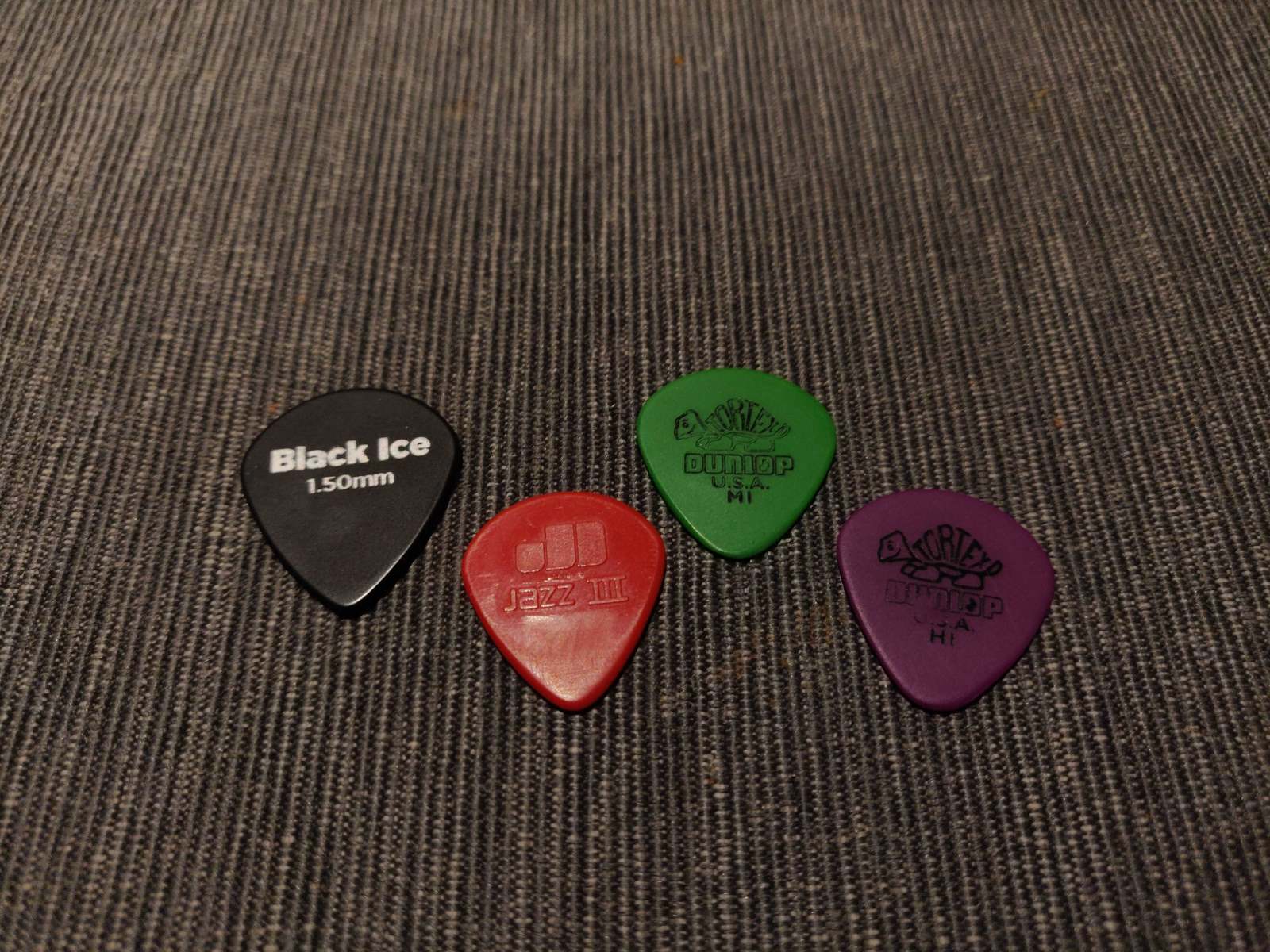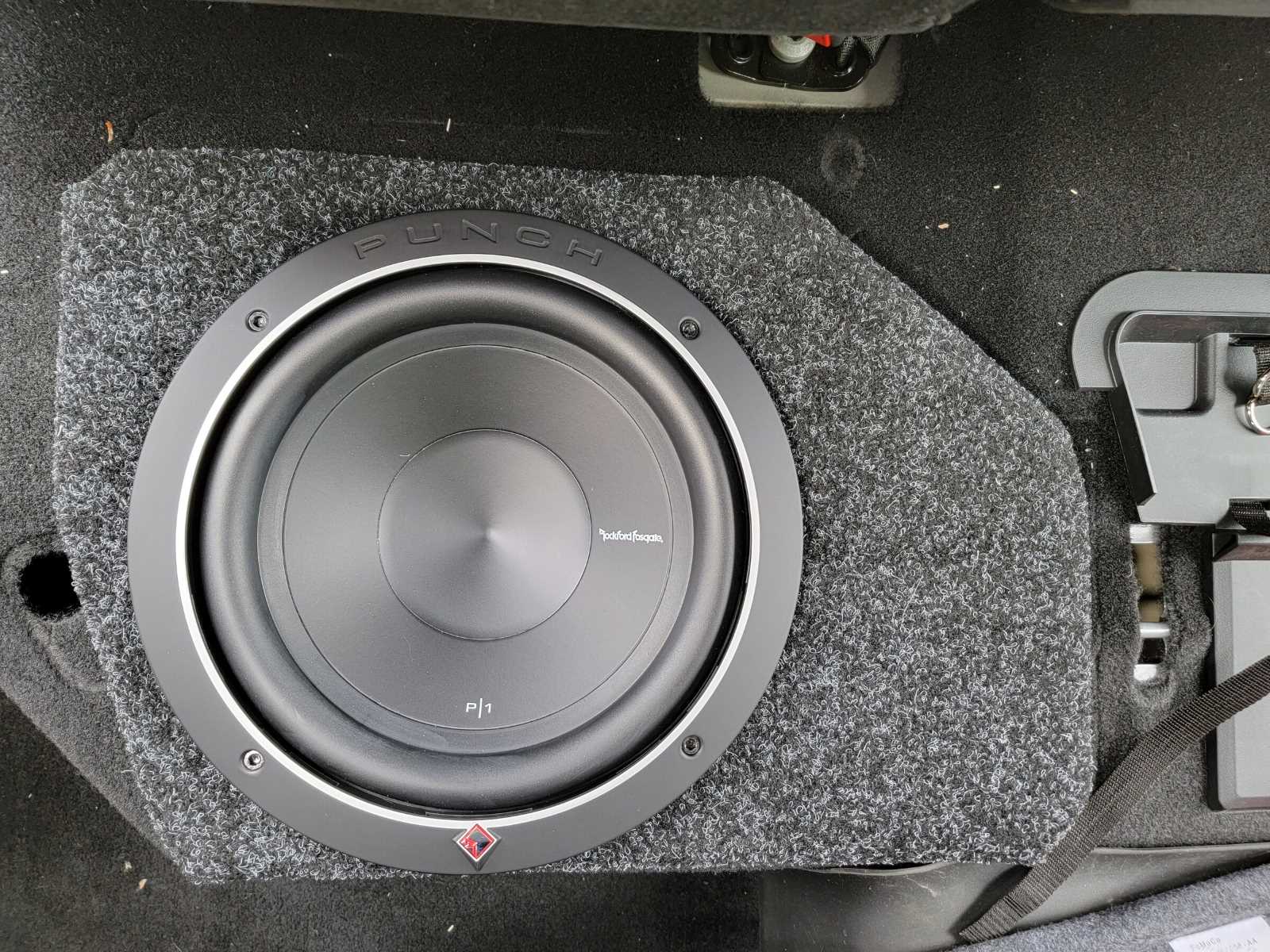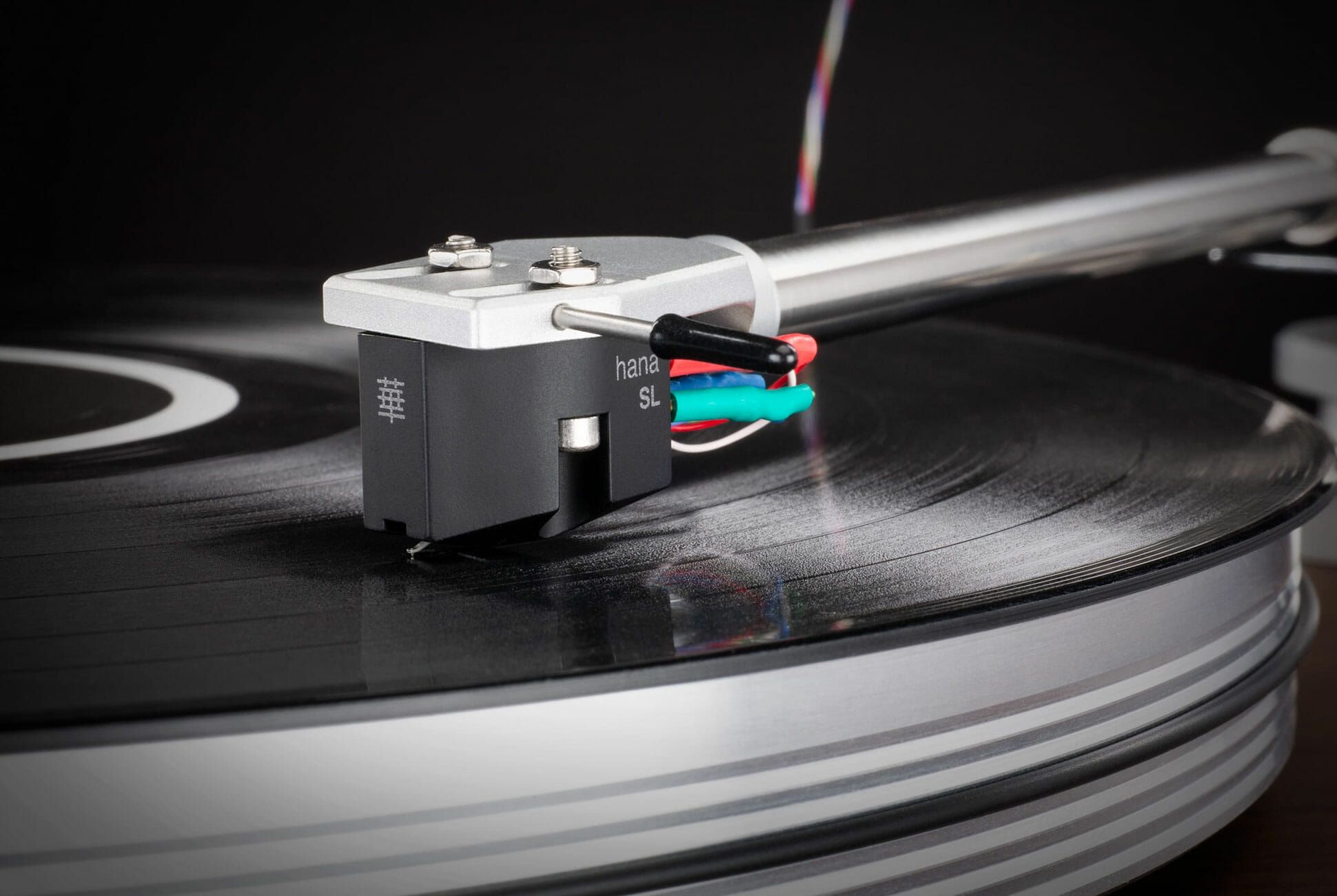Home>Devices & Equipment>Earbuds>Why Do Earbuds Break So Easily


Earbuds
Why Do Earbuds Break So Easily
Modified: January 22, 2024
Discover why earbuds easily break and learn how to prevent common issues with earbud durability. Explore effective solutions to enhance the lifespan of your earbuds.
(Many of the links in this article redirect to a specific reviewed product. Your purchase of these products through affiliate links helps to generate commission for AudioLover.com, at no extra cost. Learn more)
Table of Contents
Introduction
Earbuds have become an essential part of our daily lives, allowing us to enjoy music, podcasts, and audio content on the go. However, it’s no secret that earbuds often break or wear out much faster than we would like. Whether it’s a frayed cable, a loose connection, or one earbud suddenly going silent, dealing with earbud issues can be frustrating.
So, why do earbuds break so easily? Understanding the reasons behind their vulnerability can help us take better care of our earbuds and potentially extend their lifespan. In this article, we will explore the common causes of earbud damage and provide insightful solutions to prevent future breakages.
Earbuds are intricately designed pieces of technology that are subjected to various factors that can contribute to their fragility. From physical damage to environmental factors and manufacturing defects, there are several reasons why earbuds may not last as long as we would hope.
It’s important to note that not all earbuds are created equal, and some may be more prone to breakage than others. Lower-quality earbuds may have weaker components or subpar construction, which can increase their susceptibility to damage.
In the following sections, we will delve into the specific factors that often contribute to earbud breakage. By understanding these causes, we can adopt better habits and practices to protect our earbuds and maximize their lifespan.
The Vulnerability of Earbuds
Earbuds are incredibly small and delicate devices, making them inherently vulnerable to damage. They consist of various components, including the cables, connectors, drivers, and electronic circuitry, all of which can be easily compromised. Here are some key factors that contribute to the vulnerability of earbuds:
- Size and Portability: Earbuds are designed to be compact and lightweight, making them convenient for everyday use. However, their small size also means that they are more prone to accidental damage or misplacement.
- Frequent Use: Many of us use earbuds on a daily basis, subjecting them to constant wear and tear. As a result, the internal components and external materials are exposed to repeated stress, increasing the likelihood of breakage over time.
- Flexibility: Earbud cables need to be flexible to accommodate movement and provide freedom of use. However, this flexibility can also lead to cable tangling, bending, and strain, which can weaken the wires or cause connection issues.
- Sensitivity to Moisture: Many earbuds are not fully waterproof, making them susceptible to damage from moisture, sweat, or rain. Exposure to excessive moisture can corrode the internal components or cause short circuits, leading to malfunction or complete failure.
The combination of these factors presents a challenge in maintaining the longevity of earbuds. However, being aware of their vulnerability allows us to take proactive measures to minimize the risks and protect our investment.
Physical Damage
One of the most common reasons for earbud breakage is physical damage. Since earbuds are frequently used on the go, they are susceptible to being dropped, stepped on, or crushed in bags or pockets. Here are some specific instances of physical damage that can affect earbuds:
- Impact and Dropping: Accidentally dropping earbuds onto hard surfaces can cause internal components to shift or dislodge, leading to distortion, loss of sound, or complete failure. Impact from falls or knocks can also result in cracked or broken casings.
- Tangled Cables: When earbud cables become tangled, it often leads to pulling and tugging to untangle them. This can put strain on the cable joints or connectors, weakening them over time and potentially causing audio issues or cable breakage.
- Bending and Twisting: Bending or twisting the cables excessively can strain the wires, resulting in cable damage or disconnection. It’s important to avoid tightly winding the cables around the earbuds or bending them sharply, as these actions can cause permanent damage.
- Pressure from Bags or Pockets: When earbuds are stuffed into bags, backpacks, or pockets without proper protection, they can be subjected to pressure and squeezing. This can lead to distortion, damage to the earbud casings, or even wire breakage.
To prevent physical damage to your earbuds, it’s essential to handle them with care. Be mindful of where you store them and consider investing in a protective case to safeguard them from accidental falls or pressure. Additionally, take extra care when untangling the cables to avoid putting unnecessary strain on the connectors. By adopting these practices, you can significantly reduce the risk of physical damage to your earbuds.
Excessive Strain on the Cable
Another common cause of earbud breakage is the excessive strain placed on the cable. The cable connecting the earbuds to your audio device is a critical component that can easily be damaged if not handled properly. Here are some factors that contribute to excessive strain on the cable:
- Tugging on the Cable: Pulling forcefully on the cable, whether accidentally or intentionally, can strain the internal wiring and weaken the connection points. This can lead to audio issues or even complete cable breakage.
- Yanking the Earbuds out of the Audio Device: Removing the earbuds abruptly or forcefully can also stress the cable, especially if they are firmly lodged in the audio device. It’s crucial to remove the earbuds gently, ensuring that you grip the housing rather than pulling on the cable itself.
- Sleeping with Earbuds On: Falling asleep with earbuds in can often result in twisting and tugging of the cable as you move during sleep. This repetitive strain can weaken the wires and connectors over time.
- Excessive Cable Length: If the cable is longer than necessary, it can easily get tangled or snagged on objects, leading to strain on the cable and potential damage. Consider using cable management solutions or opting for earbuds with a shorter cable length to minimize this risk.
To prevent excessive strain on the cable, always handle your earbuds with care and avoid any unnecessary pulling or tugging. When removing the earbuds, hold onto the housing rather than the cable itself. If you tend to fall asleep with your earbuds in, consider using wireless earbuds or positioning the cable in a way that minimizes strain during sleep. Lastly, be mindful of the cable length and keep it neatly coiled or managed to avoid tangling or snagging.
By taking these precautions, you can reduce the strain on the cable and prolong the life of your earbuds.
Poor Build Quality
The quality of the material and construction of earbuds plays a significant role in their durability and longevity. Unfortunately, some earbuds are manufactured with poor build quality, which makes them more prone to breaking. Here are some aspects of poor build quality that can contribute to earbud breakage:
- Thin and Fragile Cables: Earbuds with thin or flimsy cables are more susceptible to damage, as they can easily get twisted, kinked, or snapped. The quality of the cable insulation and reinforcement is vital in protecting the internal wiring and ensuring long-term durability.
- Weak Connectors: The connectors where the cable meets the earbud housing or audio device can be a potential weak point. If the connectors are not well-designed or made from low-quality materials, they can wear out, loosen, or break over time, resulting in audio issues or total failure.
- Inadequate Housing: The housing of the earbuds should be robust enough to withstand daily use and potential impacts. Poorly designed or cheaply made housings may crack or break easily, exposing the delicate internal components to damage.
- Low-Quality Drivers: The drivers are responsible for producing the sound in earbuds. Lower-quality drivers can be more prone to distortion, audio imbalances, or sudden failures. Investing in earbuds with high-quality drivers can significantly improve their longevity and audio performance.
When purchasing earbuds, it’s crucial to do thorough research and read reviews to gauge the build quality of the product. Look for earbuds from reputable manufacturers known for their attention to detail and use of high-quality materials. Although premium earbuds may be more expensive, they often offer better build quality and longer lifespan, ultimately saving you money in the long run.
By choosing earbuds with good build quality, you can minimize the risk of breakage and enjoy a more reliable and durable audio experience.
Environmental Factors
Environmental factors can also contribute to the breakage of earbuds, especially when they are exposed to harsh conditions or elements. Here are some environmental factors that can affect the durability of earbuds:
- Moisture and Sweat: Moisture and sweat are common enemies of earbuds. Excessive sweat during workouts or exposure to rain can damage the internal components or cause corrosion, leading to malfunction or reduced lifespan. Look for earbuds that have waterproof or sweat-resistant features if you plan to use them in active or outdoor settings.
- Extreme Temperatures: Extreme heat or cold can affect the performance and durability of earbuds. High temperatures can cause the plastic housing to warp or soften, while extreme cold can make the cables more brittle and prone to breakage. Avoid storing or using earbuds in environments with extreme temperature conditions whenever possible.
- Dust and Dirt: Dust and dirt particles can accumulate within the earbud housing or connectors over time, potentially affecting the audio quality and longevity of your earbuds. Regular cleaning, using a soft cloth or brush, can help remove these particles and prevent any build-up that could lead to performance issues.
- UV Exposure: Prolonged exposure to direct sunlight or UV rays can cause the cables or housing of earbuds to degrade or discolor over time. If you frequently use your earbuds outdoors, it’s advisable to store them in a protective case or pouch to shield them from UV rays when not in use.
To protect your earbuds from environmental factors, it’s important to be mindful of where and how you use and store them. Avoid exposing them to excessive moisture, extreme temperatures, or prolonged sunlight. Additionally, keeping your earbuds clean and regularly inspecting them for any signs of damage or dirt accumulation can help maintain their performance and lifespan.
By taking these preventive measures, you can minimize the impact of environmental factors and maximize the durability of your earbuds.
Improper Handling and Storage
The way you handle and store your earbuds can greatly impact their durability and longevity. Improper handling and storage practices can lead to tangling, cable damage, or even crushing of the earbuds. Here are some common mistakes to avoid:
- Not Coiling Cables Properly: When storing your earbuds, it’s important to avoid coiling the cables tightly around the earbuds or any other objects. Tight coiling can cause stress on the internal wires and weaken the cable over time. Instead, loosely coil the cables and secure them with a clip or use a cable management solution to keep them organized.
- Not Using a Protective Case: Storing your earbuds in a bag or pocket without any protection exposes them to potential damage from other objects, pressure, or impact. Invest in a protective case or pouch specifically designed for earbuds to keep them safe when not in use.
- Pulling the Cables from a Distance: When removing your earbuds from a bag or pocket, avoid tugging on the cables to pull them out. Instead, hold onto the earbud housing while gently guiding the cable to prevent strain on the connectors or internal wiring.
- Mixing Earbuds with Other Items: Keep your earbuds separate from other items, such as keys or loose change, to prevent scratches or damage to the earbud housing or connectors. Consider using a dedicated pocket or compartment in your bag for your earbuds to ensure their safety.
By handling your earbuds with care and storing them properly, you can minimize the risk of damage and prolong their lifespan. Being mindful of these simple practices can go a long way in preserving the integrity of your earbuds.
Manufacturer Defects
Despite our best efforts to handle and care for our earbuds properly, there are instances when breakage occurs due to manufacturer defects. These defects can be present right from the manufacturing process and can significantly impact the reliability and lifespan of the earbuds. Here are some common manufacturer defects that can lead to earbud breakage:
- Poor Quality Control: In some cases, earbuds may not undergo stringent quality control measures during the manufacturing process. This can result in products with subpar components or faulty wiring, making them more prone to breakage.
- Weak or Faulty Connectors: Connectors are integral parts of earbuds, and weaknesses or manufacturing defects in their design or construction can lead to connection issues or premature failure.
- Malfunctioning Drivers: Defective drivers can cause audio imbalance, distortion, or even complete loss of sound in one or both earbuds. This can be incredibly frustrating and significantly diminish the listening experience.
- Inadequate Cable Reinforcement: The cable is another vulnerable component that can be subject to defects. Inadequate reinforcement, such as weak insulation or insufficient strain relief, can cause the cable to fray, break, or develop connection issues over time.
If you experience issues with your earbuds that are not a result of user error, it’s worth contacting the manufacturer’s customer support to inquire about warranty coverage or potential solutions. Many reputable manufacturers stand by the quality of their products and may offer replacements or repairs for earbuds with manufacturer defects.
While we cannot completely avoid the possibility of manufacturer defects, conducting thorough research, checking customer reviews, and purchasing from reputable brands can minimize the likelihood of encountering such issues. Additionally, promptly addressing any defects or issues with the manufacturer can help ensure a satisfactory resolution.
Solutions for Preventing Earbud Breakage
While earbuds are prone to breakage due to various factors, there are several proactive steps you can take to minimize the risk and prolong their lifespan. By adopting these solutions, you can enjoy your earbuds for longer and reduce the frustration of dealing with frequent replacements. Here are some effective ways to prevent earbud breakage:
- Handle with Care: Treat your earbuds gently and avoid dropping, stepping on, or crushing them. Being mindful of how you handle and store them can significantly reduce the risk of physical damage.
- Properly Coil and Store Cables: Avoid tightly coiling the cables around the earbuds and opt for loose coiling. This helps prevent strain on the cables and minimizes the risk of internal wire damage. Additionally, store your earbuds in a protective case or pouch to shield them from potential damage during storage or transport.
- Avoid Excessive Cable Strain: Be cautious when removing the earbuds from your audio device, making sure to grip the housing rather than pulling on the cable. Minimize the occurrence of tangled cables and avoid bending or twisting them excessively to reduce strain on the wires and connectors.
- Protect from Moisture: If you use your earbuds during workouts or in humid environments, consider investing in moisture-resistant or waterproof earbuds. Wiping them down after use and allowing them to dry properly can help prevent damage caused by moisture.
- Clean Regularly: Keep your earbuds clean by gently wiping them with a soft cloth or using a small brush to remove dust and dirt. Regular cleaning helps maintain their performance and prevents any build-up that could affect the audio quality or durability.
- Invest in Quality Earbuds: Choosing earbuds from reputable brands known for their quality and attention to detail can make a significant difference. While premium earbuds may be more expensive, they often offer better durability, audio performance, and customer support. Investing in quality earbuds can save you money in the long run.
- Address Manufacturer Defects: If you believe that your earbuds have a manufacturing defect, contact the manufacturer’s customer support. They may offer warranty coverage or provide solutions to address the issue.
By implementing these solutions into your earbud usage and maintenance routine, you can significantly reduce the risk of breakage and enjoy your earbuds for a longer period of time. Remember that proper handling, storage, and care are key to maximizing their lifespan and ensuring a great audio experience.
Conclusion
Earbuds are undoubtedly convenient and enjoyable, but their fragility can pose a challenge when it comes to their longevity. Understanding the reasons behind earbud breakage and taking proactive measures to prevent it can help you get the most out of your earbuds. From physical damage to excessive strain on the cable, poor build quality, environmental factors, improper handling, and even manufacturer defects, there are several factors that contribute to earbud breakage.
By handling and storing your earbuds with care, avoiding excessive strain on the cable, investing in quality earbuds, and addressing any manufacturer defects promptly, you can significantly reduce the risk of breakage and extend the lifespan of your earbuds. Taking precautions to protect your earbuds from moisture, extreme temperatures, dust, and dirt can also contribute to their durability.
Remember to clean your earbuds regularly, opting for loose coiling of the cables, and using a protective case or pouch for storage. By following these practices, you can avoid common pitfalls and enjoy uninterrupted audio experiences for longer periods of time.
In conclusion, while earbuds may be susceptible to breakage, with proper care and maintenance, you can enhance their lifespan and get more enjoyment out of them. By adopting the solutions mentioned in this article, you can minimize the risk of physical damage, excessive strain on the cable, and environmental factors that could lead to breakage. Whether you’re using earbuds for leisure, work, or fitness, taking care of them ensures that they will continue to provide a high-quality audio experience for years to come.











